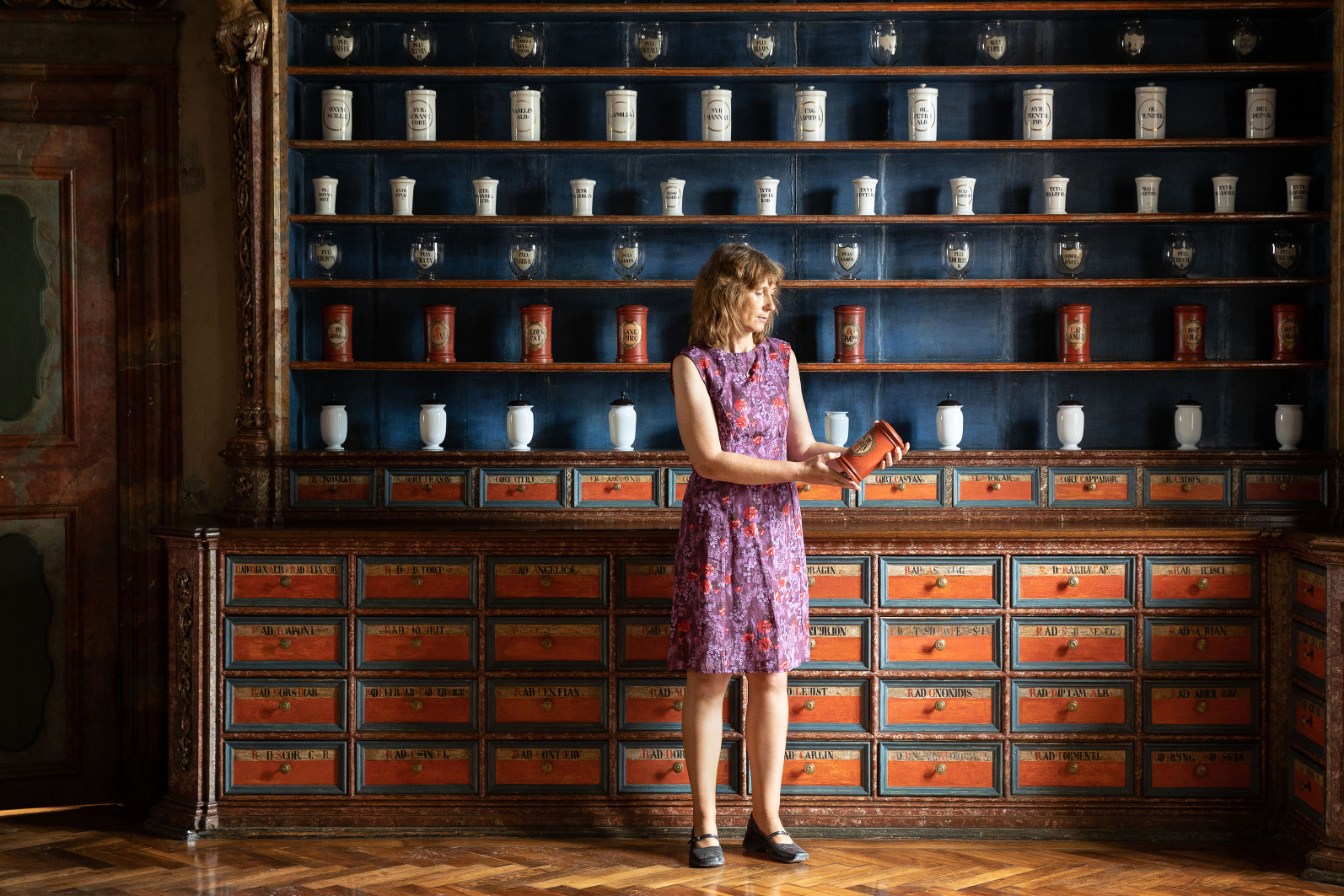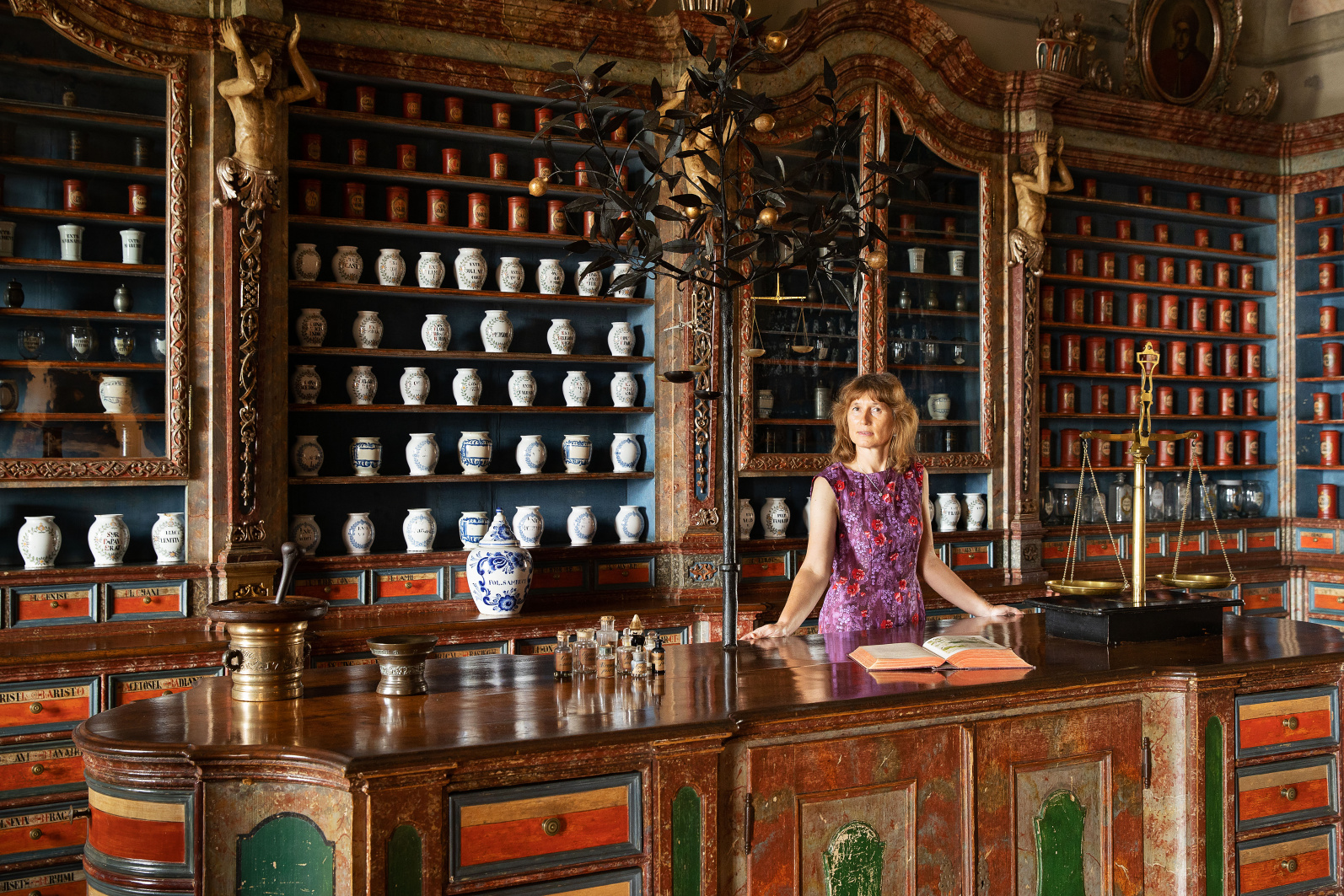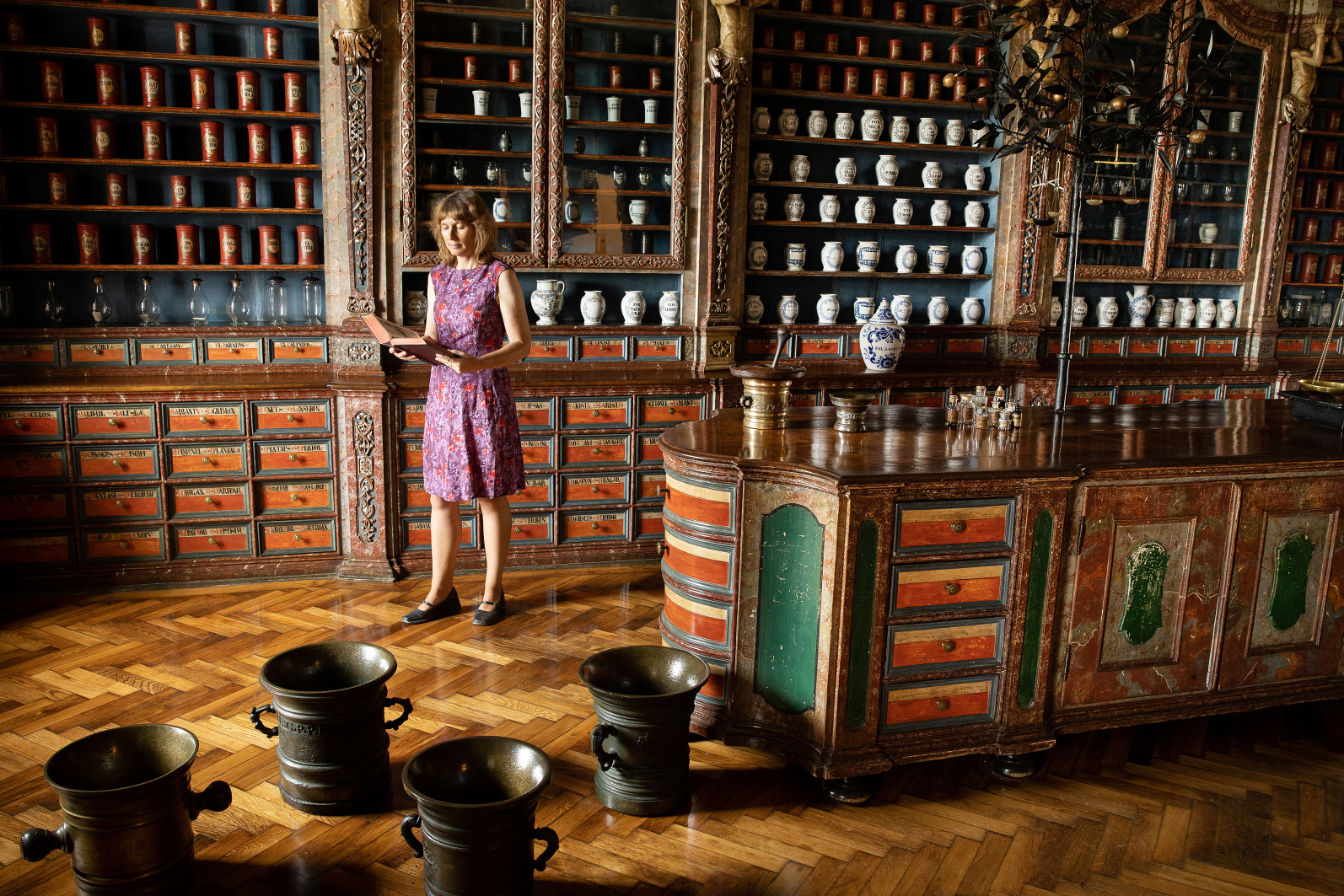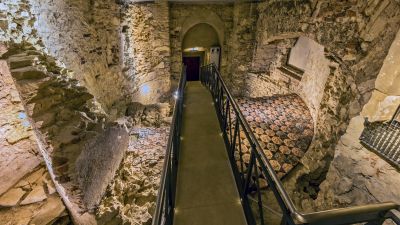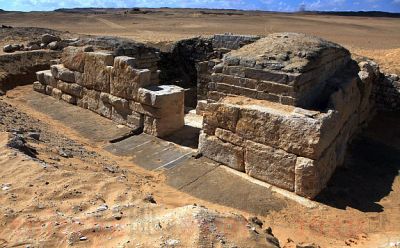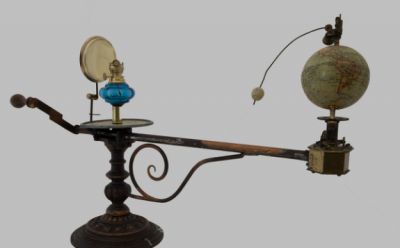The historic Kuks hospital, located just outside the eastern Bohemian town of Jaroměř, dates back to the 17th century, and is also home to a stunning 18th-century Baroque pharmacy named At the Pomegranate, overseen by the Czech Pharmaceutical Museum, Kuks, run by Charles University. Doctor of Pharmacy Jana Karlíčková from the Faculty of Pharmacy in Hradec Králové highly recommends the museum for anyone interested in the history of medicinal preparation. “[It is] the second oldest Baroque apothecary in Central Europe,” says Karlíčková (a pharmacist and pedagogue focused on healing and toxic plants), describing the atmosphere of the venerable old pharmacy as “unique.”
Kuks Hospital was founded by Count Franz Anton von Sporck to serve veteran soldiers, who were cared for by the Spanish Order of Brothers Hospitallers. The pharmacy began operating in 1743 and was named after the emblem of the order – a pomegranate apple. Inside the pharmacy, you can see a room with oil paintings featuring the likenesses of patrons of doctors and pharmacists from generations ago. The apothecary's table - the tare - is decorated with a wrought-iron pomegranate tree whose branches served as hangers for various small devices such as chemist scales.
Medicines and various remedies were stored not only in drawers, but primarily in red wooden containers for solid medicines and white ceramic vessels for liquid and semi-liquid concoctions, potions or ointments. Particularly potent or poisonous medicines were stored behind the glass doors of the repositories; only the Prior of the brotherhood had the key. Those treated at the hospital (almsmen) received medicines for free; otherwise the pharmacy supported itself by selling medicines to surrounding areas.
The operation of the pharmacy ended with the expulsion of the ethnic German population of Kuks following the end of WWII. The last order pharmacist was Master of Pharmacy Aloisius Julius Quotidian, who later worked in the Vatican pharmacy.
“As a trained pharmacist and university lecturer specialising in medicinal and toxic plants, you really pick up on the atmosphere of the pharmacy of old, when most medicines were of natural origin (plant, animal or mineral). The pharmacist was the creator of the medicinal product from start to finish, that is, from the cultivation of the medicinal plant, through its harvesting, drying, processing to the final production, for example, tincture, aromatic water, ointment, and so on. The lower shelves contain drawers used to store dried plant material - drugs. The use of oak bark, lime blossom or elderflower has not changed over the centuries,” says Dr. Karlíčková, as she shows Forum around:
“On the apothecary's table, or tare, there are scales, mortar and pestle sets, specialist books (herbarium and pharmacopoeia) and, next to it, mortars of various sizes. What remains the same in today's pharmacy, for example, is the storage of opiates in locked cabinets and their regular inspection… Phyto-pharmaceuticals (registered preparations from plants) are becoming increasingly popular in the prevention of diseases or to suppress the first symptoms of a cold or cough, here I see a connection with the past, when most medicines came from nature.”
Since 1994, Kuks Hospital has also been home to the Czech Pharmaceutical Museum (ČFM), which is an independent centre within Charles University, Faculty of Pharmacy, Charles University in Hradec Králové. The museum has long documented the development of pharmacy as a field in the Czech lands in its entirety and hosts a permanent exhibition. The ČFM also functions as a scientific workplace in the field of history of pharmacy and pharmaceutical museology; it registers diploma theses, and rigorous and doctoral theses in these fields. In addition to collecting items and archival documents, the museum's holdings also include the largest domestic library on the history of pharmacy in the Czech lands, as well as the former Austro-Hungarian Empire, and selectively from other countries (housing more than twenty thousand volumes).


